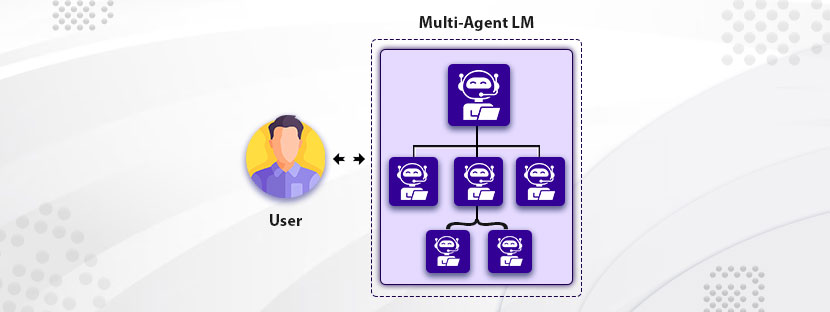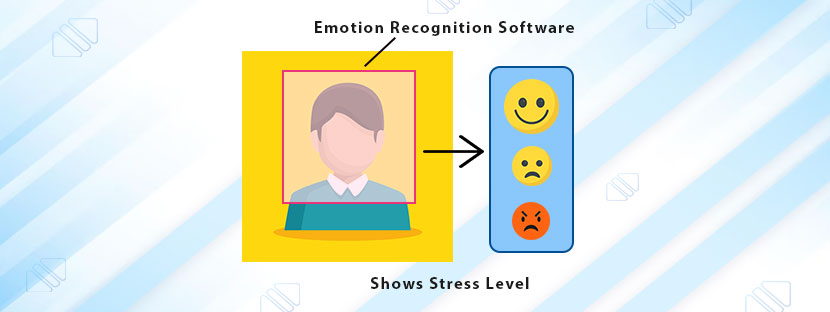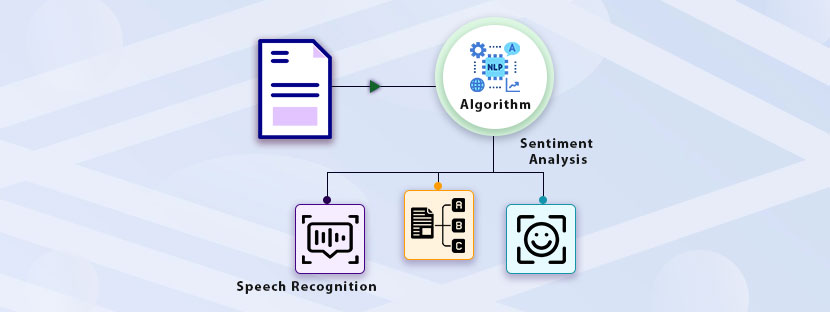Large Language Models (LLMs) are the superheroes of machine learning development in 2025. This single model is handling lengthy tasks and enabling the system to go beyond in handling tasks. Now, with the help of a good LLM agent or even going through a multi-agent language model, you can make the best use of AI.
LLM agents are those who train your LLMs. They bring more depth and precision to your AI system. So that your system can solve complex challenges and tough metrics. Till now, many AI developers or the LLM enhancers rely on single-agent LLM models. Well, they might not have tasted the power of a multi-agent language model so far.
Let this blog introduce you to the world of multi-agent LLM with an in-depth understanding of the matter. We’ll also discuss here on how these frameworks work with the help of some applications.
Get it started then.
What is a multi-agent language model?
Providing comprehensive training to AI models is extremely important. Getting your AI with proper training can help you maintain a competitive edge. Agents are there to help you with the AI training, especially if you’re working with large language models.
Large Language Models can handle many human-like tasks with a sharp detail. These models can understand human tasks better. Plus, these models help the AI system to communicate with humans better as it can understand beyond just text. Training can make LLM models work better in the right direction. In a multi-agent model, multiple agents will provide training to your LLM models. Therefore, you can get your AI a refined pattern, that too, in a better way and faster.
In traditional single-agent models, every task would like to happen one after another, along with human oversight. It used to take much time than usual to prepare the system. However, with a multi-agent language model, multiple agents work together as a team or on their own and put their strengths to handle different things. To handle their tasks, these agents use different tools and powerful language models

Multi-agent language model examples
The concept of multi-agent LLMs can be understood better with some real-life examples. Now, imagine having a personal assistant for planning your entire trip from start to finish, everything. A multi-agent model can work something like a travel planner, as;
Flight Agent
First of all, it will check available airline flights and then book one for you. It looks simple, but the model will directly assess flight search engines and other airline booking tools. Thereafter, they will utilize their expertise in checking the time, price, and the optimal route of your flight. Once they are done with all these, they confirm your ticket.
Hotel Agent
Like the flight agent, with multi-agent language model training, the system can provide you with hotel search results and book accommodations. The system will use the hotel search engines and booking platforms to arrange a nice accommodation. It will also consider your ratings, amenities, and location preferences while searching.
Transportation Agent
You need a smooth transportation system to visit places where you will travel. For that, multi-agent LLMs can help you manage your activities, arrange tours, events, and book restaurants based on your suggestions. Thus, the model will access various transport booking tools to check prices, vehicles, and even confirm pickup & drop-off locations.
Activity Agent
A regular AI system can become your activity agent easily. ChatGPT can do this for you. However, multi-agent trained language models can do a little more than traditional AI systems. It can break down complex travel planning tasks into various subtasks. So, it can book activities, events, and collect information about popular attractions.
How multi-agent language model works (frameworks)
Multi-agent language system can enable multiple AI agents to work collectively to train a large language model. They work together so that the AI system can handle complex & critical tasks, smooth workflow, and manage the overall operations seamlessly.

Here, we are going to explore some of the best multi-agent LLM frameworks.
Anomaly Detection Machine Learning Techniques
Anomaly detection is vital, and there a plenty of ways to do it. The approach or the technique depends on the amount of labeled data you have for your ML training. Here we are highlighting the common techniques that can help you with anomaly detection.
Autogen
Microsoft’s Autogen is one of the great things that has been developed so far. It acts like a playground for AI agents. Here you can find an awesome AI assistant that is ready to work together. Plus, this system considers human-in-the-loop context and is very flexible. This platform is best for developers who seek support and collaboration.
CrewAI
You can create a crew of AI agents with the help of the CrewAI framework. This framework suits the production-ready applications. Plus, crewAI offers clean code and practical application of AI operations. A crew of AI agents is the specialty of this platform, and you can perform any task with the help of this framework.
LangChain
For creating complex AI-powered applications, there’s nothing better than LangChain. This framework provides you with building blocks to connect different AI components. You can easily connect your AI applications to perform a multi-agent language model framework. Interestingly, this framework is great for developers who try to mix and match various AI applications to test their capabilities.
LongGraph
It’s another multi-agent LLM framework that is a part of the LangChain family. It helps developers create AI workflows. It provides the AI agents with a roadmap to reach the destination via various routes. Plus, this framework offers scalable and clear methods to manage multi-agent interaction. Thus, it helps manage LLM workflows better.
Multi-agent language model applications
Protecting the network is the main task of cybersecurity experts. So, anomaly detection helps find unusual patterns and behaviors in the system log in advance. Immediately, it informs the security system, and then actions are taken accordingly. It helps stop data breach incidents, potential malware attacks, and many more.
Database Monitoring
Have you heard of GPT-newspaper?
It’s a personalized and tailored newspaper that suggests news based on the users’ preferences. It works under the hood of 6 main agents. Among them, the two main agents are: “planner” and “executor” agents.
Here, the planner generates research questions while the execution agent seeks out related information from the queries. With the collaboration of all agents, the newspaper finally provides the research report that the audience seeks.
It all starts with data annotation for LLM development. With LLM fine-tuning, the model can also provide better outcomes. In the future, more things are to come and give the AI-driven world a better shape, constructively.










